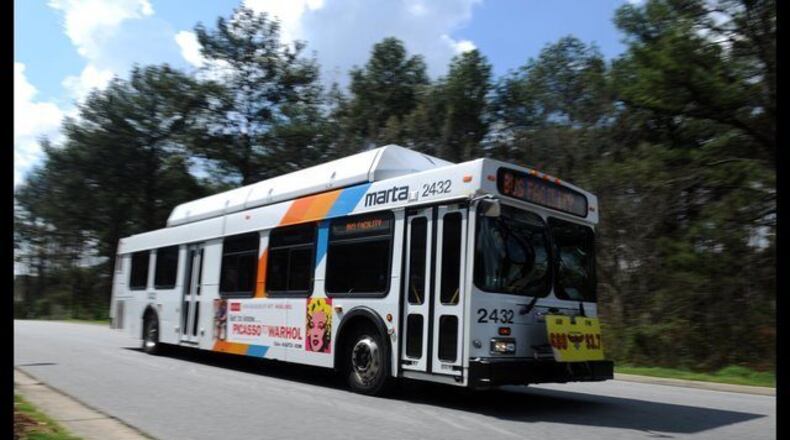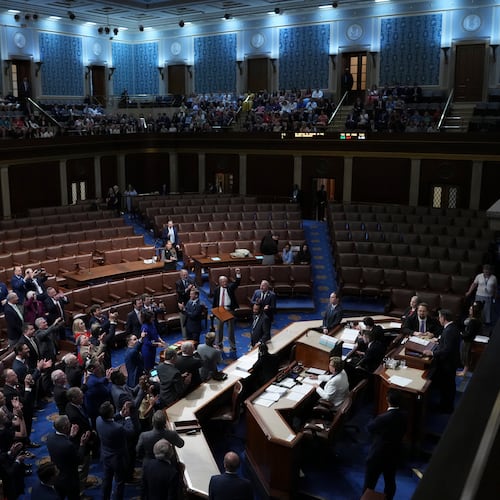Forty-five years ago, Congress was told the Apollo program – landing a manned spacecraft on the moon – had cost the United States $25.4 billion. With inflation, that would be $143.7 billion in today’s dollars. Ten years ago, an updated NASA estimate put that cost at about $200 billion in 2005 dollars.
This month, MARTA CEO Jeffrey Parker announced: “We need a moonshot for transit.”
Parker challenged the audience at his State of MARTA address to rally behind a $100 billion “moonshot” investment in transit and technology over the next 40 years, and “promised a commitment to world-class customer service and expanding MARTA as a catalyst for economic growth, innovative approaches to mobility, and community revitalization,” according to the transit agency.
“We have to make bold decisions now that include a landmark investment in our transit network to fund innovative solutions for our traffic woes and renew our commitment to future generations,” Parker said.
Parker’s “moonshot” is a great idea, if by moonshot he meant the “bold decisions” taken in space travel instead of the continued trajectory of MARTA’s outdated “rocket ship:” government-funded, government-run, fixed-rail, mass transit.
Even rocket science has discovered the advantage of the private sector. Private company SpaceX announced this month it had completed its 16th flight to and from the orbiting International Space Station. NASA last flew humans into space in 2011.
How does the private sector manage more efficiently? Its goal is to make a profit. To be profitable, however, it must offer customers what they want at a price they are willing to pay. A company must be able to compete with similar products and market its product as a better option.
For metro Atlanta’s commuters, MARTA is rarely the routinely preferred option. Worse, ridership has declined over the past decade; just 3 percent of metro Atlanta commuters use transit. Even motorists who took to MARTA after a March 2017 fire destroyed a crucial I-85 bridge promptly returned to their automobiles after the six-week repair job.
Mass transit does not relieve congestion, especially not in metro Atlanta, with its reputation as “the poster child for sprawl.” The way to attract most “choice” riders has been to complicate their preferred mode of travel; in Atlanta’s case, personal automobiles. In the 1990s, problems with auto travel were exacerbated and road improvements held hostage as Atlanta failed federal air quality standards. Today, city planners implement “road diets,” reducing auto lanes and widening sidewalks to roll up the welcome mat to cars.
MARTA’s salvation is in:
- Asserting its role as a cost-conscious transit agency, outsourcing instead of adding jobs, and setting aside distractions such as housing and city planning.
- Focusing on needs: on people who need transit and on projects that are needed instead of nice to have.
- Embracing the technologies improving travel, including apps that improve access and real-time data, autonomous shuttles on dedicated lanes (bus rapid transit) in high-traffic areas and first-mile and last-mile private partnerships with ride-hail companies.
- Ending the nostalgic "Romance of the Rail," as Cato Institute Senior Fellow Randal O'Toole describes transit advocates' obsession with fixed-rail guideways.
Instead of expanding the failing Streetcar with more rail, for example, provide flexible, rubber-tire trolley service. Instead of locking billions of tax dollars on a “moonshot” that inches rail along over 40 years – by which time SpaceX is likely to be on Mars – provide flexibility for a technology-based future. The growing toll-lane network expands the job horizon for workers without the need to build expensive fixed-guideway transportation, whether heavy rail, light rail or streetcar lines.
The bottom line: MARTA can indeed go where no transit agency has gone before. The expanded footprint granted by a 2018 state law provides the agency with opportunity to facilitate flexible solutions and local preferences and embrace a future in which transit is more efficient and effective, personalized and privatized.
About the Author
Keep Reading
The Latest
Featured



